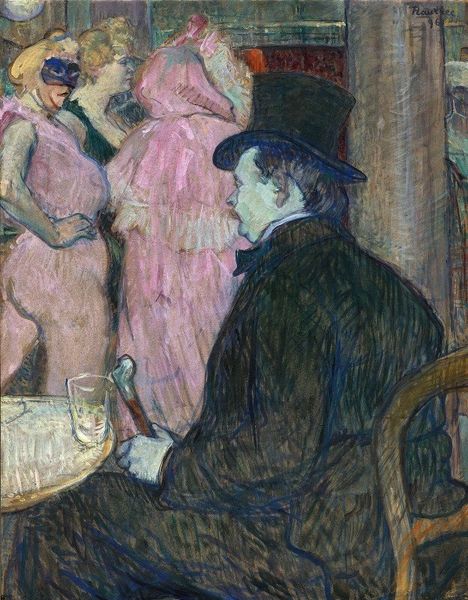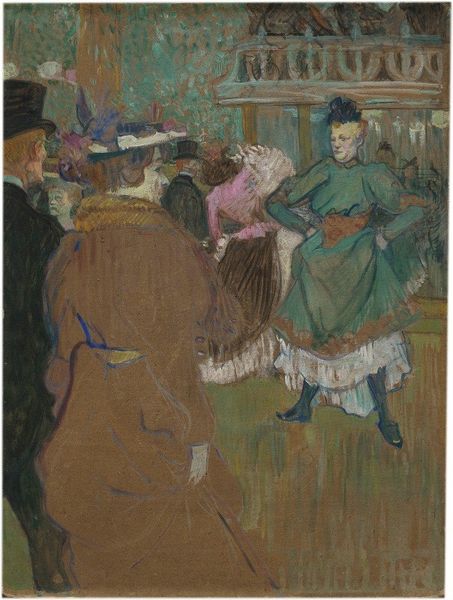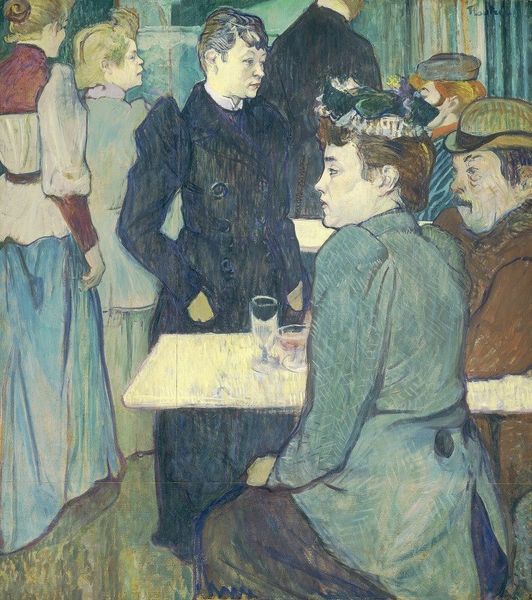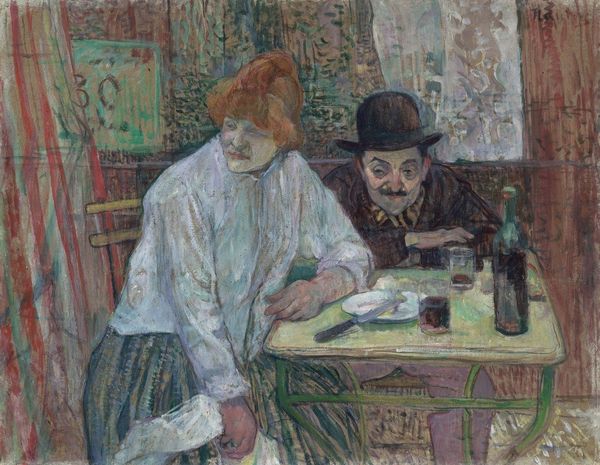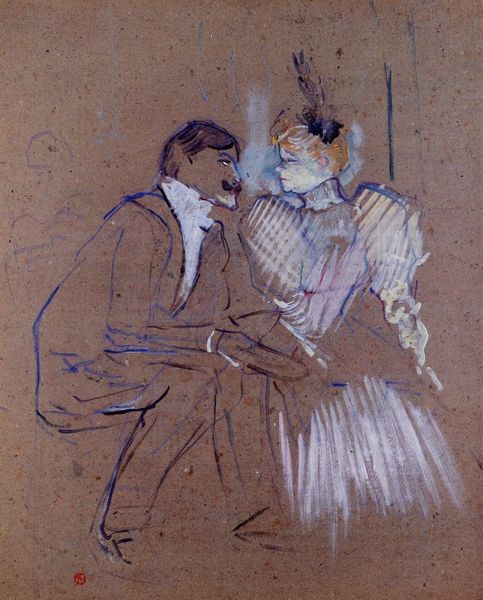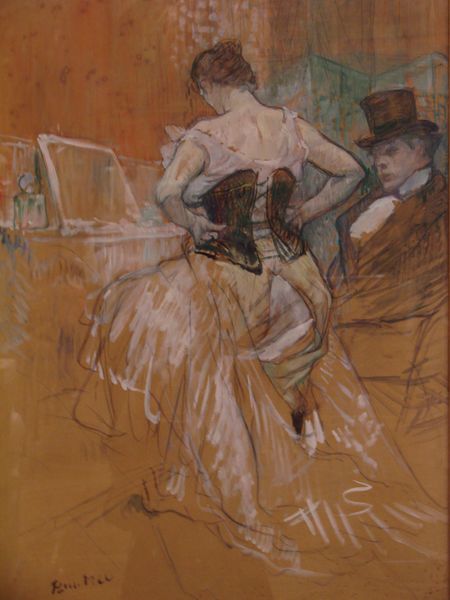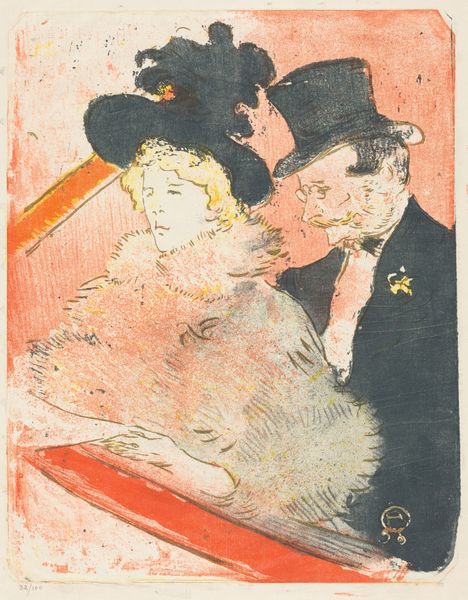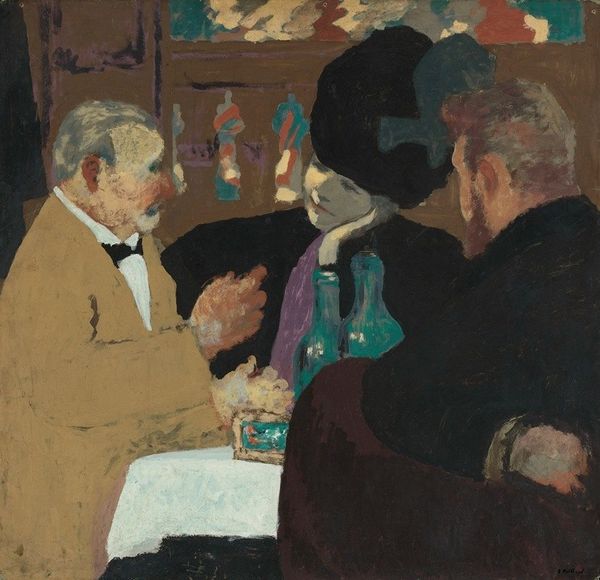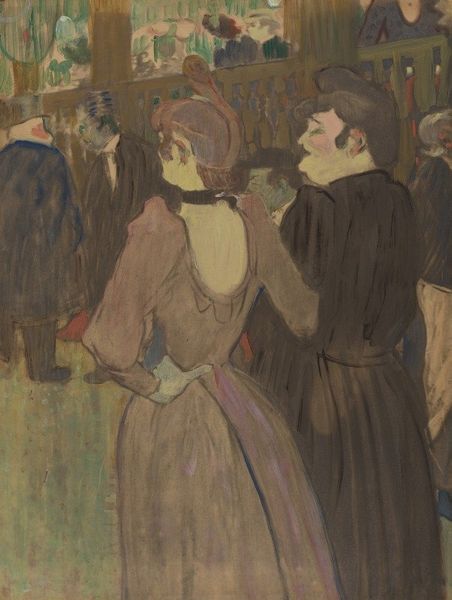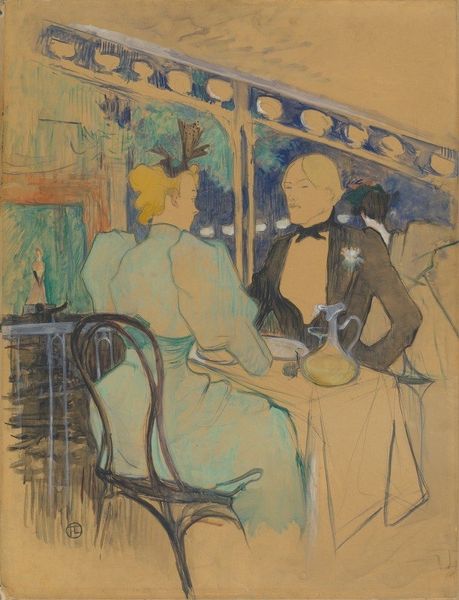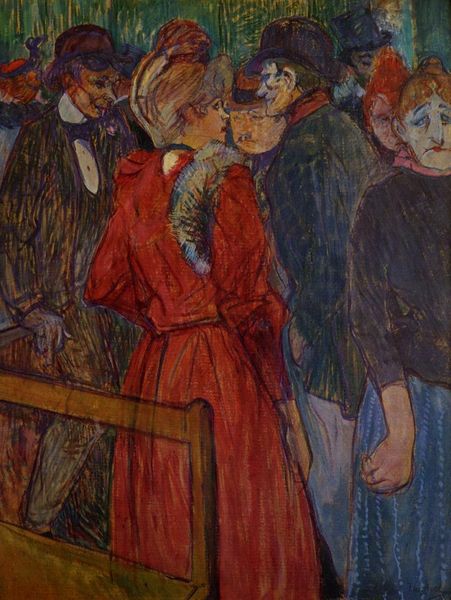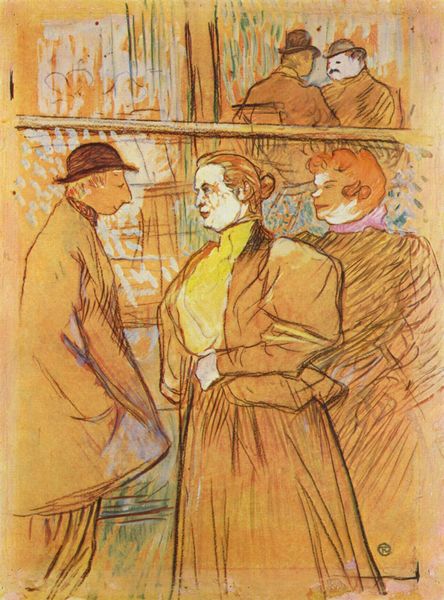
Copyright: Public Domain: Artvee
Henri de Toulouse-Lautrec made this evocative painting of an Englishman in a Parisian brothel at an unknown date. During the late 19th century, Montmartre was known for its vibrant nightlife, attracting people from all walks of life, including wealthy foreigners seeking entertainment. Lautrec, himself of noble birth, was fascinated by the demimonde and the social dynamics at play. The Englishman, with his top hat and cane, appears as a figure of authority amidst the women, who are likely sex workers. Lautrec, rather than portraying them as objects of pity or derision, captures the humanity of these women. He once said "I paint things as they are. I don't judge." There's a sense of camaraderie and even intimacy among them, challenging the traditional narrative of the fallen woman. The artist asks us to consider the complex interplay of identity, class, and gender within this unique subculture. How do we negotiate these complexities?
Comments
No comments
Be the first to comment and join the conversation on the ultimate creative platform.
